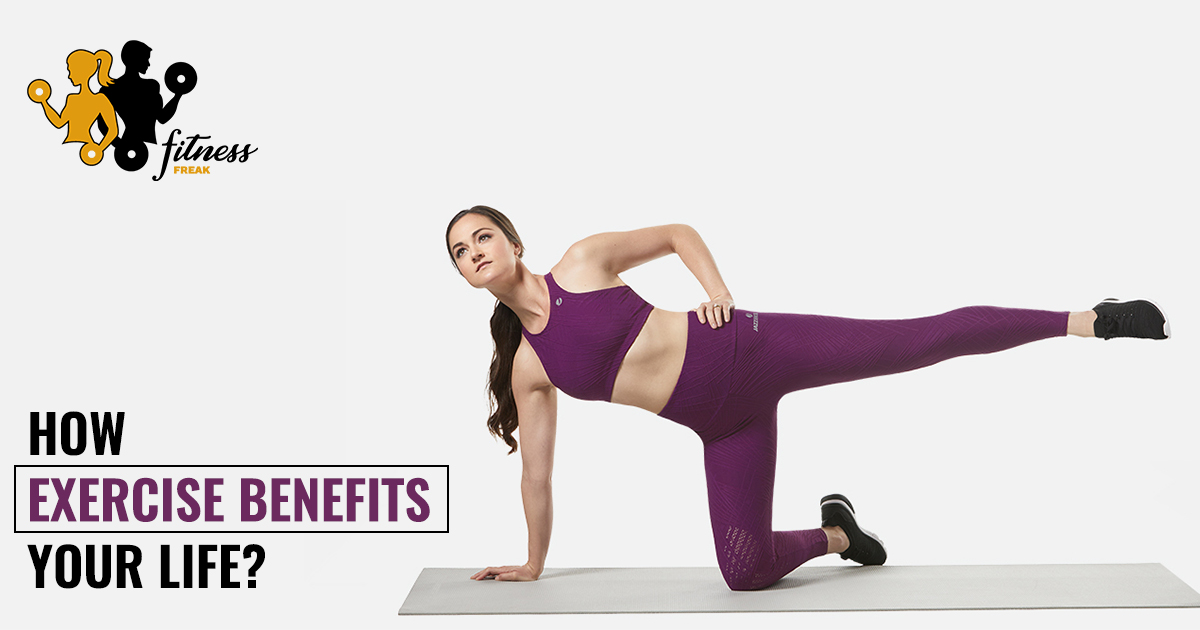
Is Resistance Training Good For Weight Loss: Read to Know the Facts!
When it comes to weight loss, cardio and aerobic exercise take all the limelight. But here we are talking about the underdog: Resistance training for physical fitness. Research shows that while cardio burns more calories per session, it can make your muscles weak. That’s where you would need resistance training to strengthen your muscles.
This blog will offer you insights into the question “Is resistance training good for weight loss?”. While we’re in the blog, you’ll see us busting some common myths around resistance training.
Also, keep reading till the very end as we’ll offer some practical tips on how you can incorporate strength training into your routine and some beginner-friendly exercises to help you kickstart your journey with strength training.
So, are you ready? Let’s get going!
All you need to know about Resistance Training
Before we delve into is resistance training good for weight loss, understanding the basics is crucial.
Resistance training, also referred to as strength or weight training, is a form of exercise aimed at increasing muscular strength and endurance. Resistance training uses external resistance to make muscles contract, making them stronger and improving endurance and overall fitness.
During resistance training, muscles contract against an external resistance, such as dumbbells, exercise bands, or one’s own body weight.
Resistance training targets various aspects of fitness, including strength, power, hypertrophy, and endurance. Common methods of resistance training include free weights, weight machines, medicine balls, resistance bands, suspension equipment, and bodyweight exercises.
Now that you understand what resistance training is, let’s explore is resistance training good for weight loss or just a myth?
Is Resistance Training Good For Weight Loss?
Resistance training, also known as strength training, or weight lifting, is a smash hit among fitness enthusiasts. Well, it has a solid reason. Unlike cardio exercises that burn calories during the activity, resistance training helps manage weight in the long run by changing body composition.
In fact, research shows that resistance training increases resting metabolic rate (RMR) more than aerobic exercise does.
Here’s another interesting benefit of resistance training: it continues to burn calories after the workout as the body repairs muscles. That means you burn calories even when you’re resting!
So, if you want to lose weight, burn fat, and build muscle, do resistance training and cardio, like High-Intensity Interval Training (HIIT).
How Resistance Training Supports Weight Loss:
As we have mentioned above as well, resistance training is a game-changer for weight loss. Below we have mentioned some of the greatest benefits of resistance training for weight loss:
1. Building Lean Muscle Mass:
First, resistance training stimulates the development of lean muscle mass. Muscle tissue burns more calories at rest than fat tissue, which contributes to an elevated resting metabolic rate. Additionally, increased muscle mass aids in weight management by fostering a higher calorie expenditure even during periods of inactivity.
2. Caloric Expenditure Beyond the Workout:
Cardio burns calories during the session. However, resistance training triggers a prolonged afterburn effect. After you exercise, your body continues to burn calories while it repairs and strengthens muscles. We call it excess post-exercise oxygen consumption (EPOC). Studies show that resistance training increases resting metabolic rate more than aerobic exercise does.
3. Fat Loss and Improved Body Composition:
Is resistance training good for weight loss” is still a concern, so forget about it because resistance training contributes to fat loss by promoting the utilization of stored fat as an energy source. When individuals engage in weightlifting, they not only shed fat but also sculpt and tone their bodies. Improved body composition becomes evident as lean muscle mass increases, providing a more aesthetically pleasing and functional physique.
Busting Myths about Resistance Training and Weight Loss:
There are a lot of myths surrounding resistance training. One of the most popular myths is that resistance training will bulk up your body. Guess what? It’s not true.
Let’s bust all of the myths together below:
1. Fear of Bulking Up:
One common misconception is that resistance training will lead to bulky muscles, especially among women. In reality, achieving a bulky physique requires specific training protocols, intense dedication, and often, genetic predisposition. On the other hand, resistance training helps people achieve a lean and toned look when done according to their goals. It doesn’t make muscles too big.
2. Cardio vs. Resistance Training:
Another myth is that cardio is better than resistance training for weight loss. While cardio is effective for burning calories during the activity, resistance training offers a more sustainable approach to weight management. Doing both, like in High-Intensity Interval Training (HIIT), helps you lose weight, burn fat, and build muscle efficiently.
Practical Tips for Incorporating Resistance Training into Your Weight Loss Journey:
Wondering how to add strength training to your weight loss routine? Check out the tips below:
1. Start with a Beginner-Friendly Routine
If you’re new to resistance training, begin with a beginner-friendly routine. Focus on compound movements that engage multiple muscle groups, such as squats, lunges, and push-ups. Then, gradually increase the intensity and complexity of your workouts as your strength improves.
2. Include a Variety of Exercises:
Additionally, to ensure comprehensive muscle engagement, incorporate a variety of resistance exercises. Target different muscle groups on different days to allow for adequate recovery. Include both free weights and machine-based exercises to diversify your routine.
3. Prioritize Progressive Overload:
Progressive overload means that to make progress, you should slowly increase the weight or difficulty of your workouts. This helps your muscles adapt and grow, improving strength and metabolism.
4. Combine Resistance Training with Cardio:
Also, you can achieve a synergistic effect by combining resistance training with cardio exercises. High-Intensity Interval Training (HIIT) combines both methods to make weight loss quicker and more efficient.
5. Ensure Proper Nutrition:
Lastly, to achieve the best weight loss results, it is important to combine resistance training with a balanced diet. Keep your protein diet adequate to support the growth of your muscles. Also, drink enough water and other liquids to boost your workout, and make sure you include a mix of micronutrients as well.
Common Resistance Training Exercises For Beginners
Let’s have a sneak peak of beginner-friendly resistance training for weight loss below:
First, stand with feet slightly wider than hip-width apart, feet facing forward. Then, lower your body down as far as you can, keeping your knees behind your toes. Finally, return to the starting position and complete 15-20 reps.

2. Push-ups:
Start in a plank position, extending your arms and aligning your body in a straight line. Gradually lower your body until your chest nearly touches the floor, with your elbows tucked in. Push yourself back up to the plank position, keeping your body in a straight line. Keep doing this motion repeatedly to achieve as many reps as possible.

3. Lunges:
Stand normally with your feet hip distance apart. Keep your spine straight and core engaged. Then, start stepping forward with one foot. Lower your body at a lever where your knee is bent at a 90-degree angle. Make sure you’re not overstressing the other knee and if it hurts cushion properly. Return to the starting position. Repeat the process with the other leg. Finish 10-15 reps for each leg.

4. Planks:
First, lie on your stomach and place your arms on the floor with your elbows touching the floor. Make sure your arms are shoulder-width distance apart. Then, slowly start lifting your body with your core engaged. To keep your core engaged, tuck your belly in. Your spine should be in line with the floor. Keep your gaze soft without overstressing the neck. Hold the position for 30 seconds. Then, gradually as your forearms get stronger, you can work it up to a few minutes.

5. Glute bridges:
First, lie flat on your back with your palms facing the floor. Bend your knees and feet flat. Tuck your belly in and slowly start lifting your hips towards the ceiling. Squeeze your glute muscles at the top and your lower back should be down. Perform 15-20 reps at a time.
Modify or intensify these exercises as needed. You can even add resistance such as dumbbells or resistance bands. Always start with a proper body alignment and gradually up the intensity to make sure you don’t get injured in the process. Slowly progressing during the training will help you gain long-term benefits without causing any harm.
Hence “ Is resistance training good for weight loss?” will no longer be a question to you.

Conclusion
To sum it all up, resistance training helps with weight loss by improving fitness and body composition. As we learn more about its benefits and debunk myths, we see that resistance training is not only about gaining strength but also about creating a healthier, leaner, and stronger body.
To maximize weight loss, add resistance training to your workout routine and eat nutritiously. Remember, if you want to achieve lasting success, you need to be consistent, patient, and dedicated to long-term health goals.
Also hope that we have given clarity to the question “ Is resistance training good for weight loss?”


You May Also Like

10 Exercises to Lose Weight Upto 20 Kgs in 3 months
August 29, 2019
How Exercise Benefits Your Life?
July 16, 2019
